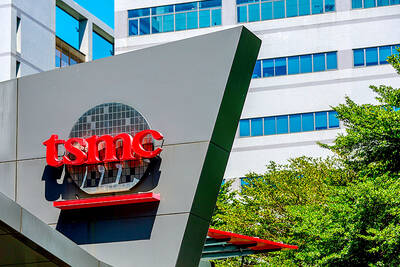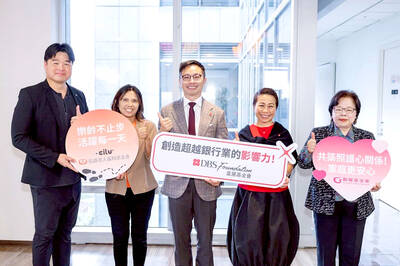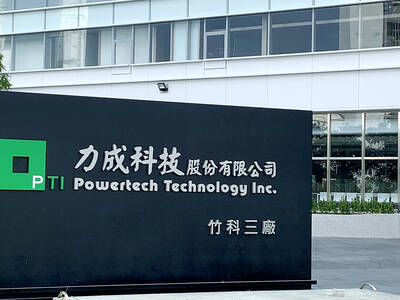Elderly Japanese, among the world’s richest retirees, are flocking to inheritance advisers, tackling historical taboos on discussing death and providing a rare avenue of growth for the country’s brokerages and banks.
Trillions of US dollars parked in savings accounts are set to be released in the coming years as Japan’s death rate climbs and new, more onerous inheritance tax rules kick in.
The shift is attracting investment from companies such as Nomura Holdings Inc, Daiwa Securities Group and Mizuho Financial Group which are ramping up offerings of inheritance-related services and products, hoping to lock in a new generation of customers.
“Until now, Nomura has dealt with its customers individually. When they pass away, that connection ends. We want their children to become customers,” said Naoshi Sakai, who oversees trusts at Nomura Securities Co, a subsidiary of Nomura Holdings.
“Business chances for domestic sales will get smaller as the population shrinks, and we have to avoid that. Inheritance is one business that will certainly grow in the next 20 years,” Sakai said.
More than US$470 billion — nearly Norway’s GDP — in financial assets is passed on annually in Japan, Nomura Institute of Capital Markets Research estimates. That figure, which includes property, is set to grow to US$660 billion a year by 2030. Cumulatively, more than US$4.7 trillion, equivalent to Japan’s GDP, will be passed down by 2030.
As families plan to deal with this flood of funds, discussion of mortality is becoming more common. Interest in shukatsu — literally preparing for the end — has boosted death-related businesses, from try-before-you-die coffins to funeral planning.
“My sons are starting to give their opinion on inheritance, and I’m interested,” 84-year-old Susumu Yokoyama said after a recent Nomura seminar on estate planning in Tokyo. “I’m thinking about what to do.”
Due to a rock-bottom birth rate, Japan’s population is shrinking and ageing fast. The government predicts the population will fall to about 80 million by 2050 from 127 million last year. By then 40 percent of people would be over 65, compared with 27 percent last year.
They are also expiring faster than ever: The national death rate spiked to 10.4 deaths per 1,000 people last year from 9.5 in 2010.
However, they are wealthy. Those over 60 years old own more than half of the country’s US$14 trillion in personal financial assets, according to the Bank of Japan.
Japan already has among the highest inheritance tax in the world with a top rate of 55 percent, and changes introduced last year lowered the threshold for paying the tax to US$280,000 from US$471,000.
In the US, the threshold is US$5.5 million with a top rate of 40 percent, while numerous countries including China and 15 Organisation of Economic Co-operation and Development nations have no inheritance tax.
Trust banks, such as Sumitomo Mitsui Trust Bank Ltd, traditionally the main providers of inheritance services, are facing a push from banks such as Mizuho, which are seeking to bolster their asset management businesses as negative interest rates sap returns and demand for loans remains tepid.
However, even as the sector grows, death remains the elephant in the room for those selling the products. Marketing materials use phrases such as “preparing for the future” or “memories for your family,” and sellers tread carefully when meeting customers.
“We discuss inheritance not in terms of ‘what will you do when you die?’ but rather in terms of how you can leave assets to your family,” said Takayuki Konno, a marketing manager at Mizuho. “It’s a practical problem that people want to solve.”

Taiwan Semiconductor Manufacturing Co (TSMC, 台積電) has secured three construction permits for its plan to build a state-of-the-art A14 wafer fab in Taichung, and is likely to start construction soon, the Central Taiwan Science Park Bureau said yesterday. Speaking with CNA, Wang Chun-chieh (王俊傑), deputy director general of the science park bureau, said the world’s largest contract chipmaker has received three construction permits — one to build a fab to roll out sophisticated chips, another to build a central utility plant to provide water and electricity for the facility and the other to build three office buildings. With the three permits, TSMC

RUN IT BACK: A succesful first project working with hyperscalers to design chips encouraged MediaTek to start a second project, aiming to hit stride in 2028 MediaTek Inc (聯發科), the world’s biggest smartphone chip supplier, yesterday said it is engaging a second hyperscaler to help design artificial intelligence (AI) accelerators used in data centers following a similar project expected to generate revenue streams soon. The first AI accelerator project is to bring in US$1 billion revenue next year and several billion US dollars more in 2027, MediaTek chief executive officer Rick Tsai (蔡力行) told a virtual investor conference yesterday. The second AI accelerator project is expected to contribute to revenue beginning in 2028, Tsai said. MediaTek yesterday raised its revenue forecast for the global AI accelerator used

The DBS Foundation yesterday announced the launch of two flagship programs, “Silver Motion” and “Happier Caregiver, Healthier Seniors,” in partnership with CCILU Ltd, Hondao Senior Citizens’ Welfare Foundation and the Garden of Hope Foundation to help Taiwan face the challenges of a rapidly aging population. The foundation said it would invest S$4.91 million (US$3.8 million) over three years to foster inclusion and resilience in an aging society. “Aging may bring challenges, but it also brings opportunities. With many Asian markets rapidly becoming super-aged, the DBS Foundation is working with a regional ecosystem of like-minded partners across the private, public and people sectors

BREAKTHROUGH TECH: Powertech expects its fan-out PLP system to become mainstream, saying it can offer three-times greater production throughput Chip packaging service provider Powertech Technology Inc (力成科技) plans to more than double its capital expenditures next year to more than NT$40 billion (US$1.31 billion) as demand for its new panel-level packaging (PLP) technology, primarily used in chips for artificial intelligence (AI) applications, has greatly exceeded what it can supply. A significant portion of the budget, about US$1 billion, would be earmarked for fan-out PLP technology, Powertech told investors yesterday. Its heavy investment in fan-out PLP technology over the past 10 years is expected to bear fruit in 2027 after the technology enters volume production, it said, adding that the tech would